Famous Photographers – A List of the Top 15 Photography Artists
Photography in art history has been a medium leveraged for different causes in the arts to express artistic messages and draw attention to experiences, places, people, and things that shape our existence. Since the 19th century, artists and photographic professionals have used photography as a tool to document, amplify, curate, sculpt, and inspire the development of visual languages. In this article, we will introduce you to the top 15 most important photographers of all time, whose contributions to the field have highlighted the wonders of photography and the different ways in which one can use photography creatively. Keep reading for a full list of the most famous photography practitioners in art history!
Photography as a Fine Art Practice
“One might compare the art of photography to the act of pointing” (John Szarkowski). Although photography was first used in a very technical and scientific manner for the purpose of documentation and a physical means of creating memories, the act of photography has evolved to become a fine art. Early photography was commonly associated with portraiture, post-mortem photography, botany, and landscape photography. These genres have since been experimental genres for exploration for many artists. Today, almost any kind of photography can be viewed as fine art, given the artist’s intention and creativity in photographic practice.
 White Fence (c. 1917) by Paul Strand; Paul Strand, Public domain, via Wikimedia Commons
White Fence (c. 1917) by Paul Strand; Paul Strand, Public domain, via Wikimedia Commons
Many fine artists use photography as a tool to document, record, historicize, identify, and express ideas, concepts, emotions, and unique viewpoints. While photography can be used for commercial purposes, artistic photography is much broader and begins with the maker – the artist and their intention. The practice of photography involves many processes that were previously not considered part of the fine arts. Artists have to consider many factors when producing creative images and these include their subject selection, choice of lens, camera framing, technical settings, lighting, select symbolism, and many other post-processing elements to build impactful photographic works.
Below, we will cover a brief history of the early development of photography in the 19th century that highlights just how much advancement we have achieved in modern technological development when it comes to creative photography practices.
Early Developments in Photography
Photography is commonly credited to the 19th century, yet it was not a spontaneous idea that was one day acted upon by a random mechanical enthusiast. The principles of photography began with Aristotle around 4 BCE, when he described the basic principles of the camera obscura. The idea was founded on the principle of projecting an image through a tiny hole called a pinhole.
Photography as an art form first emerged in the 19th century with the invention of the heliograph technique led by Frenchman, Joseph Nicéphore Niépce in 1822. Heliography is an early method of photo production that involves the reproduction of artwork using photolithography and photogravure. Niépce commenced his experimentation with photography, developing processes as early as 1811 to achieve a photo-etched image.

At the time, Niépce was already aware of previous theories about the camera obscura and how chemical development processes involving the Bitumen of Judea in etching could harden when exposed to light. During his trials, he applied the bitumen to plates of glass, copper, silver-coated copper plates, limestone, pewter, and zinc plates. The result of his findings was that the areas of the plates exposed to more light resisted dissolution in petroleum and lavender oil and the uncoated areas could be treated with etching and aquatint for printing.
In 1822, Niépce invented the first light-resistant heliographic image, which was a copy of an engraved image produced without a lens. To accomplish this, Niépce positioned the print in contact with the light-sensitive plate. As the years progressed, Niépce swapped the copper for pewter plates due to their reflective surface, which helped produce clearer images. The Frenchman penned his method in 1829 in the book On Heliography, or a method of automatically fixing by the action of light the image formed in the camera obscura, which described his process of photolithography defined as the heliographic method used to produce multiple copies of images in ink.
Later on, Niépce’s nephew Claude Félix Abel Niépce de Saint-Victor went on to add to his uncle’s technique and experiments in partnership with Lemaître to etch the heliographs and establish the foundations for photoengraving.
The first photographic image was View from the Window at Le Gras, which was produced around 1827 and is currently housed at the Harry Ransom Center at the University of Texas. Niépce later partnered with Louis Daguerre in 1829 since the two believed that through collaboration, their practices would develop more quickly. Daguerre was more focused on using the negative image developed from the bitumen but through his collaboration with Niépce, the two were able to invent a new process that resulted in a physautotype. This method involved the use of a photographic agent, which required the dissolution of lavender oil residue in alcohol. The solution would then be applied to a glass or silver plate and when dried, it would result in a powdered white finish. The plate would then be exposed via a camera obscura for eight hours and developed using a solution of petroleum-based spirits. The process would end in a positive image when displayed against a darker-value background.
After further development and the substitution of iodine in the developing process, Daguerre perfected what is known as the daguerreotype method. The daguerreotype process involves the use of mercury fumes to develop an image and as such, the first daguerreotype image was created around 1834. Later on, Daguerre partnered with Niépce’s son and announced their inventions in the Journal des artistes.

After the invention of daguerreotypes, the world of photography boomed and soon many artists and photography professionals began experimenting with alternative methods of production. Figures such as William Henry Fox Talbot and Frederick Scott Archer also made significant contributions to photography with the development of the calotype and the collodion processes.
The Top 15 Most Famous Photographers in Art History
Photography is certainly a medium that encourages creativity and spontaneity. The influence of photography on society and art meant that people had new tools to access how they chose to represent reality and explore the effects of light on the environment.
Below, we will explore a selection of the top 15 most famous and classic photographers in art history who have used photography to demonstrate the power of the medium in relaying creative concepts.
Julia Margaret Cameron (1815 – 1879)
| Name | Julia Margaret Cameron | |
| Date of Birth | 11 June 1815 | |
| Date of Death | 26 January 1879 | |
| Nationality | British | |
| Associated Movements, Themes, and Styles | Portraiture, allegory, mythology, Christianity, staged photography, and illustrative photography | |
| Mediums | Photography | |
| Famous Artworks | ● Ellen Terry (1864) ● Queen Esther before King Ahasuerus (1865) ● Alice Liddell (1872) | |
Julia Margaret Cameron was one of the most famous photographers of the 19th century whose work in portraiture and exploration of everyday Victorian life captured a unique view of 19th-century society often portrayed harshly.

Cameron was best known for works such as Queen Esther before King Ahasuerus (1865), which demonstrated her ability to incorporate performance into her photographic compositions. Cameron’s works not only explored Christianity and iconic symbols of the day, but she also brought them to life through her staged photographs, which included women, men, and children cast as different characters.
During her tenure, Cameron produced more than 900 photographs with many of her works housed in the Victoria and Albert Museum.
Alfred Stieglitz (1864 – 1946)
| Name | Alfred Stieglitz |
| Date of Birth | 1 January 1864 |
| Date of Death | 13 July 1946 |
| Nationality | American |
| Associated Movements, Themes, and Styles | American Modernism, and Modern art |
| Mediums | Photography |
| Famous Artworks | ● The Hand of Man (1902) ● Katherine (1905) ● Still Life [basket of grapes] (1908) ● From the Back Window – 291 (1915) ● Georgia O’Keeffe – Hands (1919) |
Alfred Stieglitz was perhaps the most famous photographer in art history whose Modernist works in portraiture, still-life, and the Modern American landscape of the early 20th century helped establish the medium in the world of the fine arts. Stieglitz trained as an engineer in Germany and then made his way to New York City to prove that the art of photography was just as much a fine art as that of sculpture and painting. Stieglitz was also the editor of the Camera Club of New York journal called Camera Notes, where he helped publish works by other photographers who shared similar beliefs regarding the potential for photography. After exiting the Camera Club of New York due to conflict with other members about his editorial policies, Stieglitz formed the Photo-Secession movement, which focused on the craftsmanship of the medium. Stieglitz’s approach to photography was further elevated with his experimentation with platinum printing, which is a process used to develop images with varied tonal scales and ensure a visually-pleasing, harmonious image.
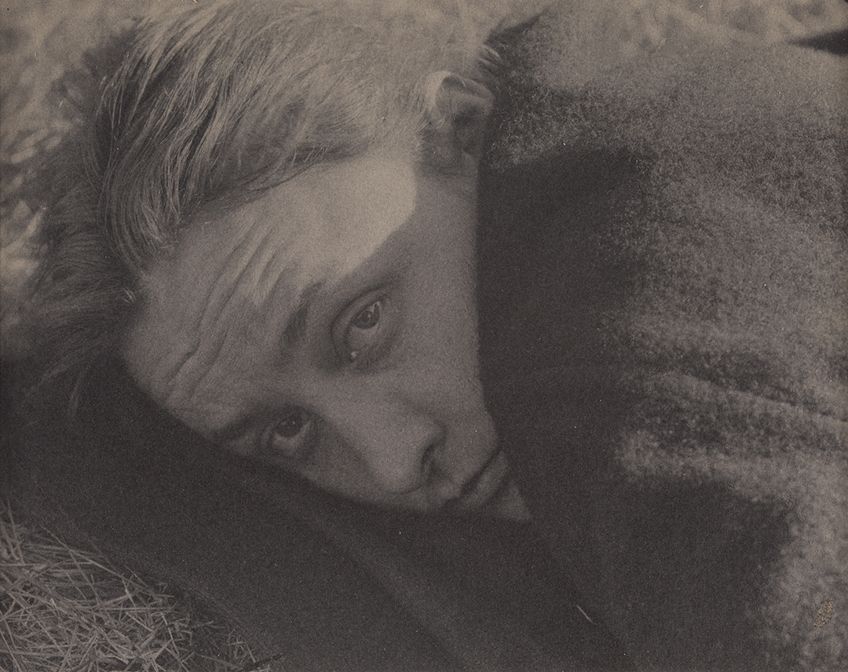
During the early 20th century, a respect for the material and transparency of process was prioritized as key tenets of Modern art inspired by Contemporary modes of living. It is important to remember that the medium of photography provided the perfect opportunity for artists to capture the fast-paced changes to American modernity while truly cooperating with the medium to naturally draw out its strengths through various print techniques and manipulations in the photo-processing phase.
Later, Stieglitz went on to celebrate the works of Paul Strand and adapted his style to suit his new preferences for photography. His most famous works are portraits of his wife Georgia O’Keeffe, of whom he shot over several hundred images to capture her personality. The idea behind the many images of a single subject was backed up by modernist concepts that expressed the idea that the external world is in constant flux and might be halted by the camera, but never stopped.
The idea of truth in a modern world was relative and photographs were more so an expression of the photographer’s feelings toward the subject and less an accurate reflection of the actual subject.
Imogen Cunningham (1883 – 1976)
| Name | Imogen Cunningham |
| Date of Birth | 12 April 1883 |
| Date of Death | 23 June 1976 |
| Nationality | American |
| Associated Movements, Themes, and Styles | Modern art, industrial landscapes, botanical photography, nude art, Modernist art, street photography, and American Modernism |
| Mediums | Photography and film |
| Famous Artworks | ● Dream (1910) ● Magnolia Blossom (1925) ● Two Callas (1925) ● Martha Graham (1931) ● Money Plant (1956) |
Imogen Cunningham was one of the most famous classic photographers of the 20th century who specialized in botanical photography, nude art, and industrial landscapes. Cunningham was associated with a collective called the Group f/64, which focused solely on photographing simple subjects in sharp focus and detail. Cunningham’s introduction to photography began when she was 18 years old after she acquired her first camera. Later on, she took up photography again while studying at the University of Washington.
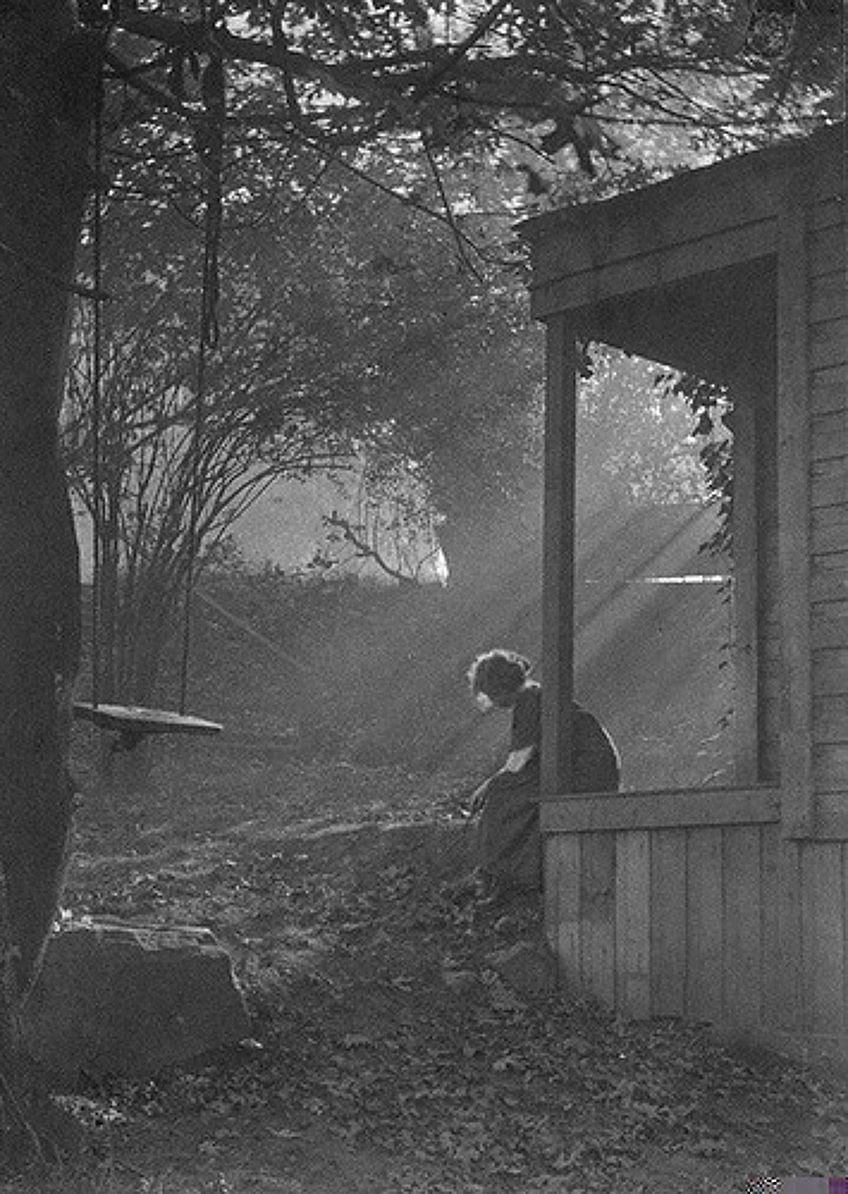
Cunningham graduated with a chemistry degree and wrote her final thesis on the Modern Processes of Photography. After leaving university, she joined photographer Edward Sherriff Curtis in his studio where she learned about practical photography, platinum printing, and the portraiture business. In the 1930s, Cunningham received a commission from Vanity Fair to create portraits of “ugly men”.
Later in her career, she also explored street photography and received an invite from Ansel Adams to join the art department at the California School of Fine Arts alongside Dorothea Lange.
Paul Strand (1890 – 1976)
| Name | Nathaniel Paul Stransky | |
| Date of Birth | 16 October 1890 | |
| Date of Death | 31 March 1976 | |
| Nationality | American | |
| Associated Movements, Themes, and Styles | American Modernism, Modern art, formal abstraction, urban photography, cityscapes, still-life, and portraiture | |
| Mediums | Photography and film | |
| Famous Artworks | ● Wall Street (1915) ● Portrait – New York (1916) ● Photograph – New York [Sandwich Man] (1917) ● Photograph – New York [Abstraction, Porch Shadows] (1917) | |
Paul Strand was one of the most famous portrait photographers of the 20th century who also founded the Photo League in 1936. With an extensive photographic portfolio covering a diverse array of subjects from across Africa, Europe, and the Americas, Strand was an icon of his time. Strand first picked up a camera at the young age of 12 and had since taken a deep interest in the field. By his late teenage era, Strand was studying under Lewis Hine, a famous documentary photographer at the Ethical Culture Fieldston School.
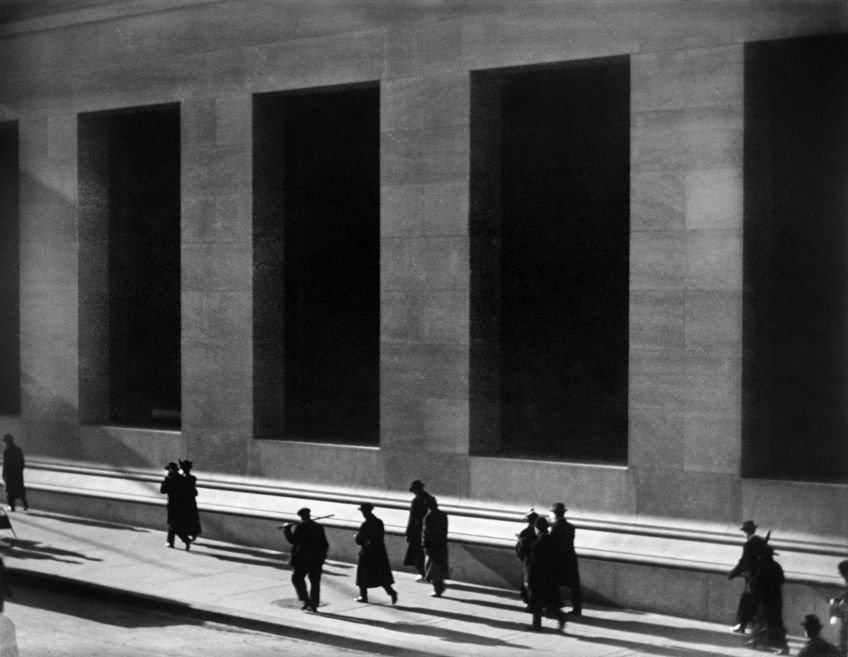
On one of the school’s field trips, Strand met Alfred Stieglitz, who was one of the major pioneers of Modernist photography and later supported Strand’s work at the 291 gallery. Strand is best known for his photographic experiments with formal abstraction as seen in the famous Wall Street (1915) photograph shot by Strand. Strand was also interested in the use of photography as a tool to drive social reform. He also spent some time in still photography and motion picture filmmaking with some of his most famous works being the silent film Manhatta (1921) produced with fellow artist Charles Sheeler.
The highest price paid for a Strand photograph was captured in 2013 as Akeley Motion Picture Camera (1922), which sold for $783,750.
Man Ray (1890 – 1976)
| Name | Emmanuel Radnitzky (professionally known as Man Ray) |
| Date of Birth | 27 August 1890 |
| Date of Death | 18 November 1976 |
| Nationality | American |
| Associated Movements, Themes, and Styles | American Modernism, Modern art, Dada, Cubism, anti-art, Avant-Garde, Abstract art, and Surrealism |
| Mediums | Photography |
| Famous Artworks | ● Le Violon d’Ingres (1924) ● Peggy Guggenheim (1924) ● Glass Tears (1932) ● Veiled Erotic Meret Oppenheim (1933) ● Dora Maar (1936) |
Man Ray was among the most popular photographers of the 20th century whose images have influenced the understanding of photography as more than a technical documentation process and more as a creative practice. Ray spent the majority of his career in Paris and was a prolific figure in the Dada and Surrealist movements. Ray was a famous fashion photographer and portraiture artist who also coined the term “rayographs” as his unique style of photograms.
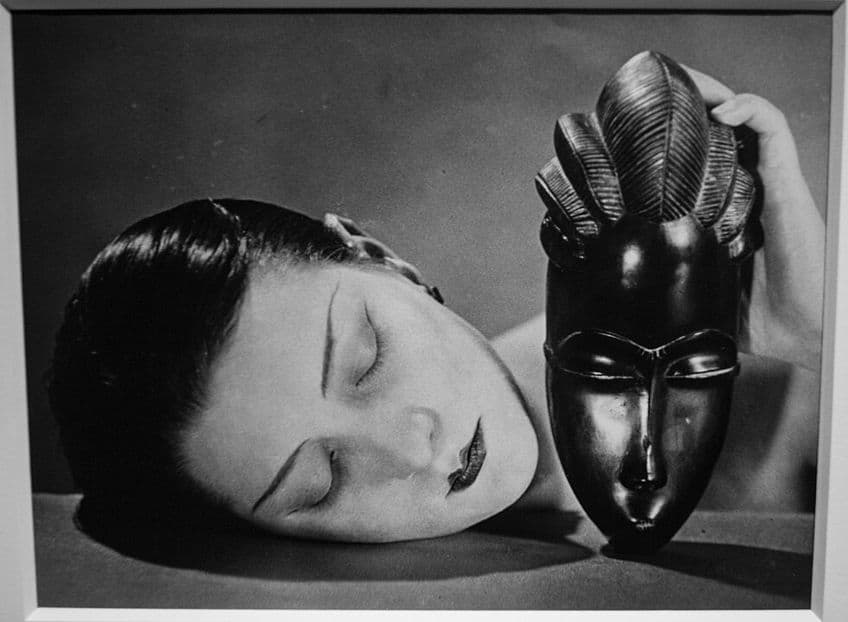
One of the most well-known works by Man Ray includes his series of African art objects photographed in the collections of Charles Ratton and Paul Guillaume. He was also described as being the photographer who “vogue’d” African art through his black-and-white noir visual language. Le Violon d’Ingres is one of Ray’s most famous photographs shot in 1924 and is an example of Surrealist photography. The image illustrates the nude model Kiki de Montparnasse with two f-holes painted onto her back to mimic the shape and appearance of a violin. The photo is also controversial for its apparent objectification of a woman’s body as an instrument since the model was Ray’s lover and professional model at the time.
Ray viewed the image as a mockery of tradition inspired by the painting The Valpinçon Bather (1808), created by Jean-Auguste-Dominique Ingres.
Dorothea Lange (1895 – 1965)
| Name | Dorothea Lange |
| Date of Birth | 26 May 1895 |
| Date of Death | 11 October 1965 |
| Nationality | American |
| Associated Movements, Themes, and Styles | Modern art, documentary, portraiture, the Great Depression, civil rights, war, and social change |
| Mediums | Photography |
| Famous Artworks | ● White Angel Bread Line, San Francisco (1933) ● Human Erosion in California (Migrant Mother) (1936) ● Damaged Child, Shacktown, Elm Grove, Oklahoma (1936) ● Six Lettuce Pickers (1965) |
Dorothea Lange was a pioneer in the field of documentary photography and one of the most popular photographers during the Great Depression in 1930s America. Lange was best known for works such as White Angel Bread Line, San Francisco (1933) and Human Erosion in California (Migrant Mother) (1936), which became historical images for the documentation of the effects of the economic state of the United States and the struggles that many families faced due to increased levels of unemployment and homelessness.

Lange’s work reflected how photography was used to document social change and was particularly impactful during Lange’s employment at the Farm Security Administration and War Relocation Authority. Lange’s style captured the social horrors of poverty, struggle, and the emotional labor and toil of many people, including the effects of the Pearl Harbor attack, which resulted in the government ordering many Japanese citizens to leave their homes.
Lange’s contribution to documentary photography remains iconic and is a profound marker of the effects of social change in American history.
Ansel Adams (1902 – 1984)
| Name | Ansel Easton Adams |
| Date of Birth | 20 February 1902 |
| Date of Death | 22 April 1984 |
| Nationality | American |
| Associated Movements, Themes, and Styles | Landscape photography, environmental art, environmental activism, Modern art, Contemporary art, and conservationism |
| Mediums | Photography |
| Famous Artworks | ● The Tetons and the Snake River (1942) ● Sand Dunes, Sunrise, Death Valley National Monument, California (1948) ● Moon Over Half Dome (1960) ● Rosalynn and Jimmy Carter (1979) |
Ansel Adams was one of the most famous photographers of American landscape art and environmental conservation throughout the 20th century. Adams was one of the founding members of Group f/64, which advocated for “pure photography” with the use of an image’s full tonal range. Alongside Fred Archer, Adams developed the Zone system, which was a process of image production that involved the creation of a final print achieved through an in-depth knowledge of how to record and develop tonal range during the image exposure, development of negatives, and printing phases.

The Zone system technique would result in an image with intense clarity and depth and as such became the foundational style in his black-and-white photography. Adams’ early exploration of photography began when he was 12 years old after being given a camera and joining the Sierra Club where he shot his first images at Yosemite National Park. He was then sought out by the United States Department of the Interior to produce images for the national parks. As a result of his excellent services, Adams was awarded the Presidential Medal of Freedom in 1980. By the mid-20th century, Adams’ work had matured and was also inspired by the works of Paul Strand. Adams’ first solo museum show was held in 1931 at the Smithsonian Institution titled Pictorial Photographs of the Sierra Nevada Mountains and featured over 60 prints of images shot in the Canadian Rockies and High Sierra.
In 1952, Adams also co-founded the magazine Aperture while making contributions to the travel magazine Arizona Highways. In 1975, he also helped establish the University of Arizona’s Center for Creative Photography and four years later, produced a commissioned portrait for U.S. President Jimmy Carter.
Gerda Taro (1910 – 1937)
| Name | Gerta Pohorylle (professionally known as Gerda Taro) |
| Date of Birth | 1 August 1910 |
| Date of Death | 26 July 1937 |
| Nationality | German |
| Associated Movements, Themes, and Styles | Modern art, photojournalism, war photography, politics, and Spanish Civil War |
| Mediums | Photography |
| Famous Artworks | ● Republican Militia Members (1936) ● Militiawoman training on the beach outside Barcelona (1936) ● Republican Soldiers with Artillery, Aragón Front. (1936) ● Republican soldiers (Spanish Civil War) (1936 – 1937) ● Battleship Jaime I, Almería (1937) |
Gerda Taro was one of the most famous photographers and photojournalists of the early 20th century who sadly passed away during her assignment at the Battle of Brunete. Taro’s brief career in wartime documentary images and photojournalism during the Spanish Civil War had a significant impact on the genre of modern war photography as her work highlighted the many nuanced and traumatic experiences of soldiers in the conflict zone. Her assignments were incredibly risky, but her work will always be treasured as a historical artifact of the Spanish Civil war that broke out in 1936.
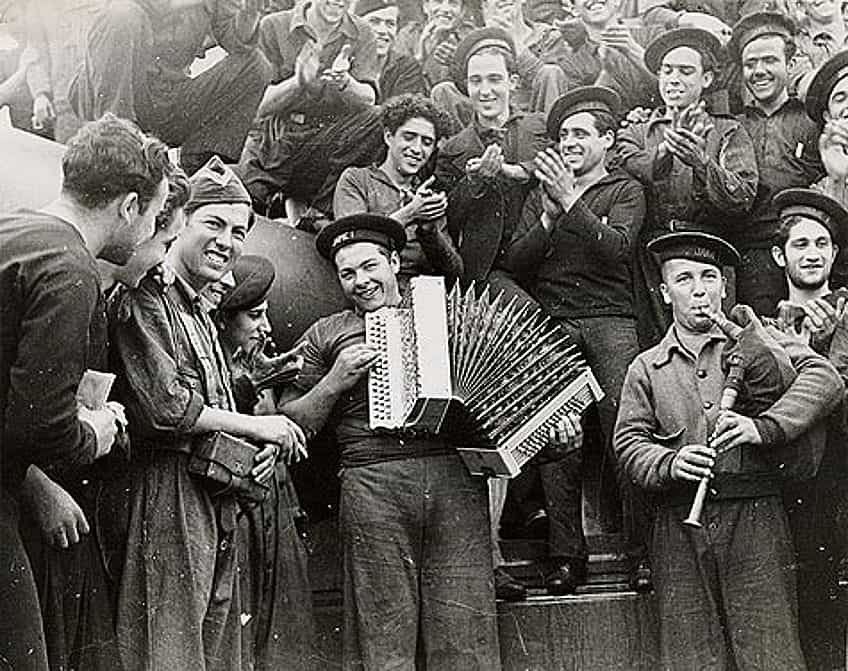
Taro’s introduction to photography began after she fled from anti-Semitic Germany under Hitler’s rule to Paris where she gained the acquaintance of photojournalist Endre Friedmann, who she fell in love with as his studio assistant. The two conjured up a plan and claimed to be agents of a non-existent photographer Robert Capa so that they could photograph images and sell them under the fake name. While Friedmann kept the name Capa for professional purposes, Taro, who was born Gerta Pohorylle, fashioned her own artist name from a Japanese artist known as Tarō Okamoto and a Swedish actress called Greta Garbo to settle on Gerda Taro. During the war in Spain, Taro acquired the nickname “La pequeña rubia” while documenting the conflict in the Southern Córdoba region and Aragon. Taro ended up turning down Capa’s proposal and later became affiliated with the anti-fascist group, which included figures like George Orwell.
Taro’s coverage of the war in the Brunete area was also the only real evidence of the actual events that transpired at the time and was highly sought after by the international press. A special documentary film was produced based on Taro and Capa’s account and was released in 2011 as The Mexican Suitcase.
Robert Frank (1924 – 2019)
| Name | Robert Frank |
| Date of Birth | 9 November 1924 |
| Date of Death | 9 September 2019 |
| Nationality | Swiss |
| Associated Movements, Themes, and Styles | Modern art, Contemporary art, urban art, racial strife, economic struggle, and modern American culture |
| Mediums | Photography and film |
| Famous Artworks | ● Men of Air, New York (1948) ● Coney Island (1948) ● Profile, Venice (1949) ● Car accident – U.S. 66, between ● Covered Car, Long Beach, California (1955 – 1956) ● Winslow and Flagstaff, Arizona (1956) ● ‘Mary’ (Provincetown) (1961) |
Robert Frank is one of the most celebrated icons of Modern photography and is most famous for his photobook The Americans (1958), which contains many interesting black and white photos taken from his trip across the United States sponsored by the Guggenheim fellowship. Frank’s documentation of 1950s American culture and urban imagery was exhibited internationally across major art institutions such as Kunsthaus Zürich and Tate Modern. Frank’s photography echoes the romanticization of 50s and 60s Modern America through montage scenes captured in cinematic high-contrast black and white images.
The Swiss artist was not too precious with capturing a technically-correct image, rather, his works were intuitive and also reflected a gritty post-war American landscape that rippled into his film work. A few of his cinematic masterpieces include Pull My Daisy (1959) and Me and My Brother (1965-1968). By the 1970s, Frank’s photography reflected his interest in experimental film while combining various methods to achieve an expression of his personal history.
Frank fuses the genre of collage with handwriting, splicing, polaroids, photomontage, 35mm negatives, stenciling, and scratching to relay messages about his individual experience.
William Eggleston (1939 – Present)
| Name | William Eggleston |
| Date of Birth | 27 July 1939 |
| Date of Death | Present |
| Nationality | American |
| Associated Movements, Themes, and Styles | Modern art, Contemporary art, and Pop art |
| Mediums | Photography |
| Famous Artworks | ● Untitled [From The Seventies Volume One] (1968) ● Untitled, Memphis (1970) ● En Route to New Orleans (1971) ● The Red Ceiling (1973) ● Yellow Flowers, Hillside, California (1978) ● Untitled (c. 1983) |
Award-winning photographer William Eggleston is a famous American photographer and pioneer of color photography. Eggleston’s early photographic career began in black and white and transitioned to color photographs by the 1960s.
The photographer adopted color transparency film as his new medium and thereafter was introduced to Walter Hopps through his friend William Christenberry who was also a photographer and educator. In the 1970s, Eggleston held classes at Harvard where he encountered dye-transfer printing, which was a process used to print technicolor films.
Eggleston’s visual language and photographic style are described as reminiscent of the photorealist American vernacular that also appreciated the seemingly mundane beauty of the world.
Annie Leibovitz (1949 – Present)
| Name | Anna-Lou Leibovitz |
| Date of Birth | 2 October 1949 |
| Date of Death | Present |
| Nationality | American |
| Associated Movements, Themes, and Styles | Modern art, Contemporary art, portraiture, popular culture, and celebrity portraiture |
| Mediums | Photography and painting |
| Famous Artworks | ● John Lennon and Yoko Ono, The Dakota, New York, December 8 (1980) ● Lauren Hutton, Oxford, Mississippi (1981) ● Muhammad Ali, New York (1996) ● Queen Elizabeth II, The White Drawing Room, Buckingham Palace, London (2007) |
Annie Leibovitz is one of the most famous portrait photographers of the Contemporary era whose work in celebrity portraiture has made her a pillar of modern photography. Leibovitz is most famous for her polaroid image of artist and musician couple Yoko Ono and John Lennon, shot a few hours before Lennon’s death.

Leibovitz has also worked with other top celebrities and franchises, including the late Queen Elizabeth II, Whoopi Goldberg, Dolly Parton, and Bob Marley. Leibovitz has a talent for capturing the essence of her models and celebrities that only she can achieve in a way that is not forced or over-curated. Leibovitz’s artistic influences include figures such as Margaret Bourke-White, Richard Avedon, and Henri Cartier-Bresson who inspired her early passion for photography.
The American photographer has also worked with the Walt Disney Company and is established as the first woman to hold a feature show at the National Portrait Gallery.
Nan Goldin (1953 – Present)
| Name | Nancy Goldin |
| Date of Birth | 12 September 1953 |
| Date of Death | Present |
| Nationality | American |
| Associated Movements, Themes, and Styles | Modern art, Contemporary art, LGBT subcultures, sexuality, HIV/AIDS, and the opioid crisis |
| Mediums | Photography |
| Famous Artworks | ● The Hug, NYC (1980) ● Rise and Monty Kissing, New York City (1980) ● Nan and Brian in Bed, New York City (1983) ● Jimmy Paulette & Misty in a Taxi, NYC (1991) |
Nan Goldin is one of the most prolific and famous portrait photographers of the Contemporary period whose poetic works of late-20th century New York City subculture remain socially historical. Goldin’s photographic oeuvre includes her snapshot documentation of intimacy and bohemian culture of the city during the HIV/AIDS crisis as well as sexuality and love within the LGBT community.
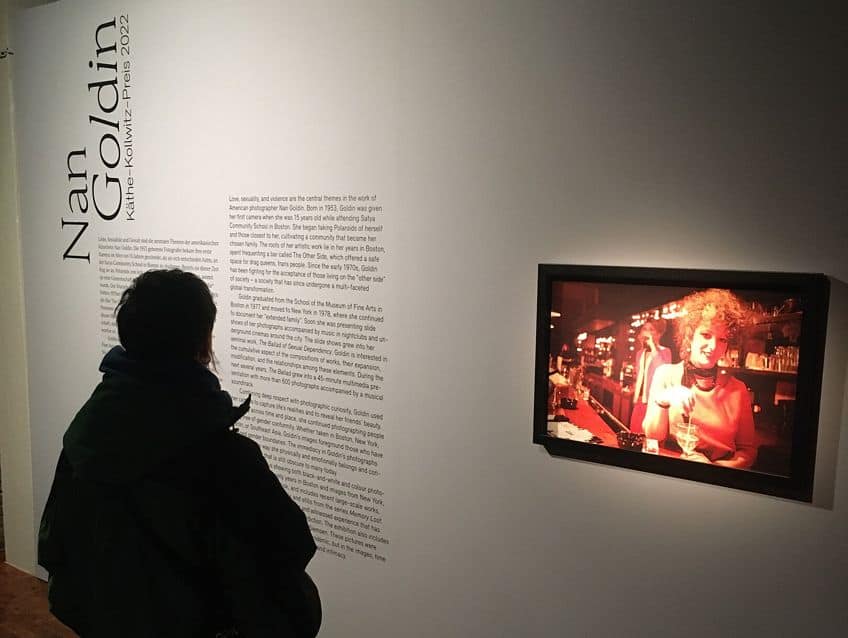
Goldin’s 700-image series The Ballad of Sexual Dependency is her most well-known series that highlights the beauty of the inner lives of individuals in New York and the intimate moments between social movements. Goldin is also the founder of Prescription Addiction Intervention Now. Goldin has had numerous exhibitions in many major art institutions, including the Whitney Museum of American Art and the Centre Georges Pompidou.
The award-winning photographer has also bagged many prestigious awards such as the Engelhard Award, the Hasselblad Award, and the Louis Comfort Tiffany Foundation Award among many others.
Cindy Sherman (1954 – Present)
| Artist Name | Cynthia Morris Sherman |
| Date of Birth | 19 January 1954 |
| Date of Death | Present |
| Nationality | American |
| Associated Movements, Themes, and Styles | Contemporary art, Modern American art, social critique, self-portraiture, identity, artificial beauty, cinematic stereotypes, gender roles, and celebrity portraiture |
| Mediums | Photography and film |
| Famous Artworks | ● Untitled Film Stills (1977-1980) ● Untitled Film Still #11 (1978) ● Untitled Film Still #18 (1978) ● Untitled (Marilyn) (1982) ● Untitled 184 (1988) ● Untitled #408 (2002) |
Photographic legend Cindy Sherman is one of the most famous Contemporary photographers of the 1970s whose work sells in the millions on auction. Sherman is most famous for her exploration of artificial beauty, gender roles, and identity, which was captured beautifully in her series Untitled Film Stills (1977-1980).
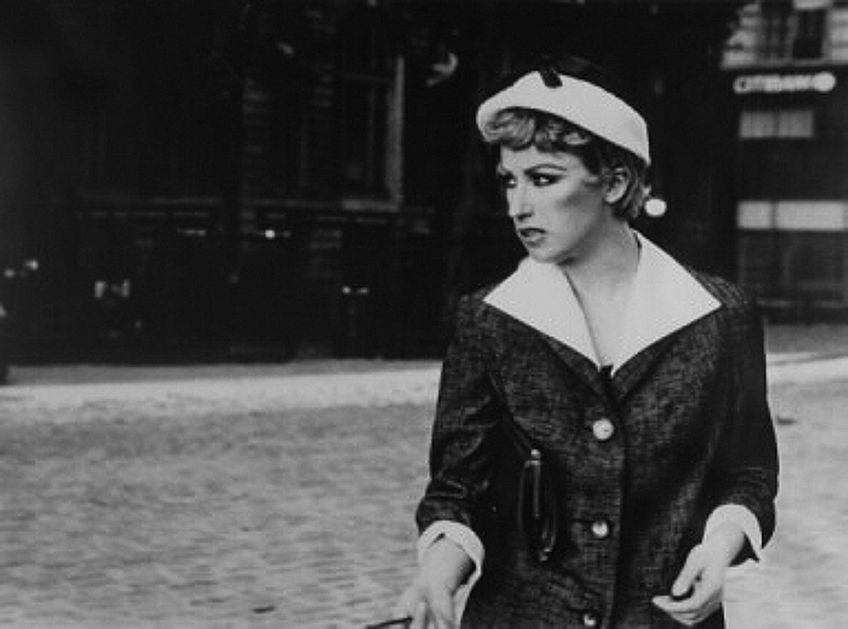
Sherman’s photography is incredibly profound as it disrupts social narratives around femininity by presenting it as a social construct. The American artist also inserts herself into her work by posing as different characters that evoke elaborate, seductive, and engaging concepts around the film and representation of women.
She is best known for her affiliation with the Pictures Generation with her works being acquired by institutions such as the London National Portrait Gallery and the New York Museum of Modern Art.
David LaChapelle (1963 – Present)
| Name | David LaChapelle |
| Date of Birth | 11 March 1963 |
| Date of Death | Present |
| Nationality | American |
| Associated Movements, Themes, and Styles | Contemporary art, fashion photography, portraiture, celebrity portraiture, Pop art, conceptual art, and Surrealist photography |
| Mediums | Photography and video |
| Famous Artworks | ● Archangel Uriel (1985) ● Vulgar Tears, Paris (1995) ● Pamela Anderson: Voluptuous Attentions (2001) ● Fish Stick (Devon Aoki) (2002) ● Courtney Love: Tattooed Heart (2006) ● Rebirth of Venus (2009) |
Lauded by many, David LaChapelle is one of the most famous Contemporary photographers of the 21st century who has collaborated with many celebrities and models, including figures such as Angelina Jolie and Pamela Anderson.
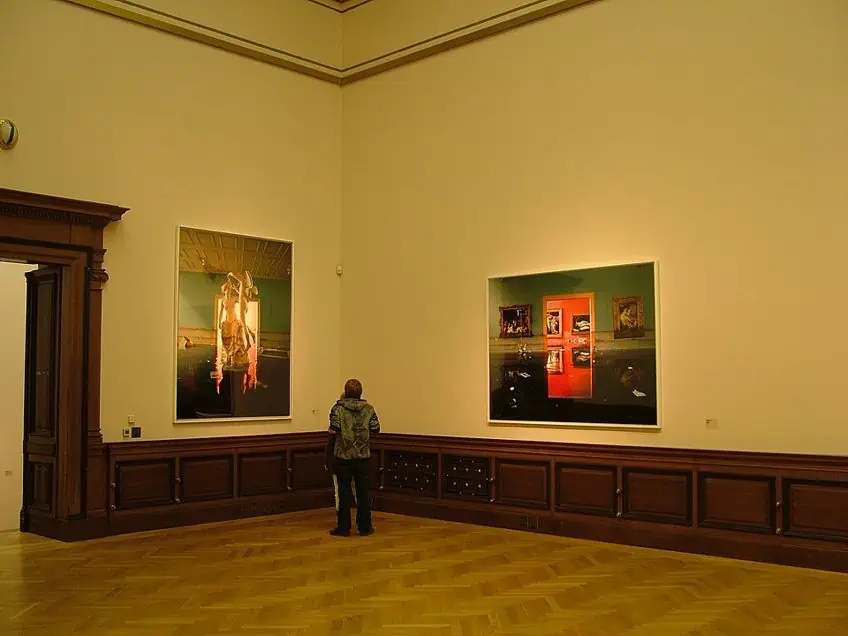
LaChapelle is most famous for his work in commercial fashion portraiture, which integrates elements of Surrealist photography while drawing from various iconic art historical pieces. Many of the artist’s best works are recreations of Renaissance artworks and were first noticed by Pop pioneer Andy Warhol who offered LaChapelle a job in the 1980s at Interview Magazine.
LaChapelle’s work is also described as provocative and comical and has been collected by major institutions such as the London National Portrait Gallery and the Los Angeles County Museum of Art.
Lynsey Addario (1973 – Present)
| Name | Lynsey Addario |
| Date of Birth | 13 November 1973 |
| Date of Death | Present |
| Nationality | American |
| Associated Movements, Themes, and Styles | Contemporary art, documentative photography, photojournalism, human conflict, war, and human rights violations |
| Mediums | Photography |
| Famous Artworks | ● Of Love And War (2008) |
Lynsey Addario is one of the most formidable Contemporary photographers of the decade whose history in photojournalism and documentative photography makes her one of the most important photographers of all time. Her most famous series Of Love And War (2008) is an ode to her practice, which highlights her dedication to documenting the unseen narratives of the effects of war and the issues faced by people across Africa and the Middle East.
Addario has worked with National Geographic and the New York Times on various assignments to capture unseen and underreported realities. Addario was also kidnapped twice in her career for her work, which has left a significant impact on the kinds of visual information that is exposed as raw and evident of the convoluted politics of the 21st century. Among other notable artists who produced famous photography works include Edward Steichen, Edward Weston, Robert Capa, Hiroshi Sugimoto, Martin Parr, Tim Walker, Shirin Neshat, Diane Arbus, Nobuyoshi Araki, Pieter Hugo, and Andreas Gursky.
It is hard not to appreciate the diversity that photography can achieve when looking at the works of these famous photographers. By examining the approaches and innovative ways in which these artists have used photography to relay creative concepts, one can learn that photography offers more than just a snap of an image. Photography is both proof of our subjective realities and the imagined realities of the future.
Take a look at our most famous photographers webstory here!
Frequently Asked Questions
Who Is the Most Famous Modern Photographer in the World?
The most famous modern photographer in the world is considered to be Ansel Adams, who was a famous American landscape photographer and environmental activist. Ansel Adams is most famous for his creative darkroom work and is recognized as the co-founder of the photography collective, Group f/64.
Who Invented Photography?
The figures credited with the invention of photography include a French inventor named Joseph Nicéphore Niépce, who created the first permanent image in 1826. Other primary figures include Louis Daguerre and Henry Fox Talbot.
What Is the Most Expensive Photograph in the World?
The most expensive photograph in the world is Le Violon d’Ingres (1924), which was created by Man Ray. The famous Ray photograph was sold in 2022 at Christie’s New York for $12.4 million, and is followed by an image by Edward Steichen, The Flatiron (1904), which closed at $11.8 million in 2022.
Jordan Anthony is a Cape Town-based film photographer, curator, and arts writer. She holds a Bachelor of Art in Fine Arts from the University of the Witwatersrand, Johannesburg, where she explored themes like healing, identity, dreams, and intuitive creation in her Contemporary art practice. Jordan has collaborated with various local art institutions, including the KZNSA Gallery in Durban, the Turbine Art Fair, and the Wits Art Museum. Her photography focuses on abstract color manipulations, portraiture, candid shots, and urban landscapes. She’s intrigued by philosophy, memory, and esotericism, drawing inspiration from Surrealism, Fluxus, and ancient civilizations, as well as childhood influences and found objects. Jordan is working for artfilemagazine since 2022 and writes blog posts about art history and photography.
Learn more about Jordan Anthony and about us.
Cite this Article
Jordan, Anthony, “Famous Photographers – A List of the Top 15 Photography Artists.” artfilemagazine – Your Online Art Source. August 21, 2023. URL: https://artfilemagazine.com/famous-photographers/
Anthony, J. (2023, 21 August). Famous Photographers – A List of the Top 15 Photography Artists. artfilemagazine – Your Online Art Source. https://artfilemagazine.com/famous-photographers/
Anthony, Jordan. “Famous Photographers – A List of the Top 15 Photography Artists.” artfilemagazine – Your Online Art Source, August 21, 2023. https://artfilemagazine.com/famous-photographers/.



